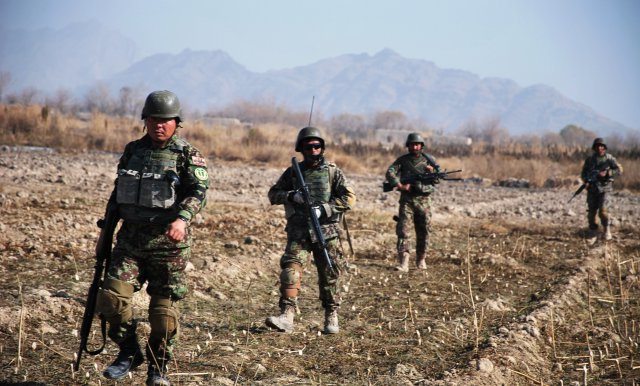KANDAHAR AIRFIELD, Afghanistan: Multiple Afghan National Defense and security forces units are in the midst of a large-scale operation in the country’s southeastern areas in a coordinated attack on anti-government forces’ historical safe havens.
The Afghan National Army’s 205th Corps and 203rd Corps, the Kandahar province 2nd Mobile Strike Force, the Afghan 3rd Special Operations Kandak, and others are pressing forward daily as they conduct operations to clear areas of enemy fighters and to secure the local population in Zabul and Ghazni provinces. The operation hinges on the rapid, close cooperation of disparate elements throughout Afghanistan’s military, police, and civil government elements.
More than 1,500 Afghan service members are involved.
The 205th Corps focuses its efforts on Zabul province. NATO Train, Advise, Assist Command – South, or TAAC-S, a coalition unit, partners with the corps. The U.S. Army’s 1st Cavalry Division heads TAAC-S, which is composed of Service members from the U.S. 101st Airborne Division, the 82nd Airborne Division, the Australian 205th Coalition Advisory Team, and multiple coalition units from Bulgaria and Romania.
Afghan Maj. Gen. Abdul Hamid, commander of the 205th, recently praised the unit’s accomplishments and efforts against the enemy by saying the operation would continue to clear the province of enemy fighters.
“We’ve seen great cross-pillar communication and relationships,” said U.S. Army Maj. James Thomasson, of the 101st Airborne Division, who heads the TAAC-S forward operational center, which monitors the Afghan operation. “They [the multiple Afghan units] are working well together. They are sharing information, they are integrated into the mission command and control aspect, and they’re having success working together as a joint team as they clear the Zabul area.
“There is information sharing at all levels … at multiple echelons up to the corps level, as well as laterally to [the Afghan National Police], the Mobile Strike Force, special operations, and as a result of this intelligence sharing, they are acting on it.”
The Afghan forces are targeting the provinces that have historically served as safe havens for enemy forces. The operation is the first of its kind to target the provinces in multiple years.
Additionally, the Afghan military is employing increasingly sophisticated tactics and weapons platforms. The Afghan air force successfully targeted and destroyed multiple anti-aircraft weapons – an attack that necessitated quick and effective sharing of target locations, April 23.
More recently, an Afghan National Police patrol discovered an improvised explosive device, or IED, near a civilian school. Radioing to its headquarters, the patrol coordinated with an Afghan National Army element, which quickly responded and destroyed the IED in place. No service members or civilians were injured.
“Their systems are in place to work very efficiently to ensure the safe delivery of fires,” Thomasson said.
Aside from direct attacks on the enemy, the Afghans focus on infrastructure and aiding the population. As Service members move through areas, they conduct infrastructure assessments and repairs.
“We’re seeing a very effective corps staff that has developed what has been a very successful plan,” Thomasson said. “It was all Afghan-run, throughout the planning process, through the rehearsals, and now through execution.”
TAAC-S is headquartered on Kandahar Airfield in Kandahar province. The 205th Corps is headquartered nearby, on Camp Hero, in the same province.










